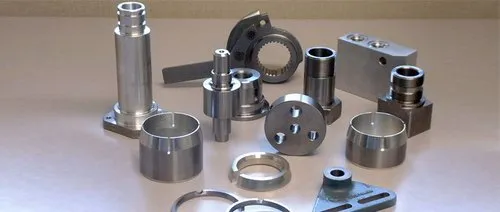In the realm of modern manufacturing, Computer Numerical Control (CNC) machines have emerged as indispensable tools, revolutionizing industries across the globe. These remarkable machines offer precision, efficiency, and versatility that traditional manual machining techniques simply cannot match. In this article, we will delve into the world of CNC machines, exploring their history, applications, and the incredible impact they have on various industries.
A Brief History of CNC Machines
The roots of CNC machining can be traced back to the mid-20th century when the aerospace industry sought a more efficient and precise method for machining complex parts. The advent of digital computing and electronics paved the way for the development of CNC technology.
1950s-1960s: During this era, researchers and engineers began experimenting with the concept of automated machining, leading to the invention of the first CNC machines. These early machines relied on punched paper tapes to control their movements.
1970s-1980s: The 1970s marked a CNC auto parts turning point with the introduction of microprocessors, making CNC machines more accessible and user-friendly. This decade also saw the integration of computer-aided design (CAD) and computer-aided manufacturing (CAM) software, enabling engineers to create and control complex geometries.
1990s-Present: The 1990s brought about further advancements, such as improved software interfaces, faster processing speeds, and enhanced tooling capabilities. Today, CNC machines are equipped with cutting-edge technology, allowing for unprecedented precision and efficiency.
CNC Machines: Types and Functions
CNC machines come in various types, each tailored to specific manufacturing needs. Here are some of the most common types and their functions:
- CNC Milling Machines
Function: CNC milling machines are used to remove material from a workpiece by rotating a cutting tool. They can produce a wide range of complex shapes, including slots, holes, and three-dimensional contours.
Applications: CNC milling is widely employed in industries like aerospace, automotive, and mold making for producing precision parts and prototypes.
- CNC Turning Machines
Function: CNC turning machines, also known as lathes, rotate a workpiece while a cutting tool shapes it. They are ideal for creating cylindrical parts and components.
Applications: CNC turning is crucial in the production of shafts, bolts, and other cylindrical objects commonly found in the manufacturing sector.
- CNC Laser Cutting Machines
Function: CNC laser cutting machines utilize high-energy laser beams to precisely cut, engrave, or etch materials such as metal, wood, and plastic.
Applications: Industries ranging from signage and jewelry-making to automotive and aerospace rely on CNC laser cutting for intricate and accurate designs.
- CNC Plasma Cutting Machines
Function: CNC plasma cutting machines use ionized gas to cut through electrically conductive materials, making them well-suited for thick metal fabrication.
Applications: Industries involved in heavy metal fabrication, like shipbuilding and construction, depend on CNC plasma cutting for its speed and accuracy.
- CNC Routing Machines
Function: CNC routing machines are used for carving, drilling, and shaping materials like wood, plastic, and composites, making them ideal for woodworking and signage production.
Applications: Woodworking shops, signage companies, and furniture manufacturers utilize CNC routers to achieve precision and intricacy in their projects.
The Advantages of CNC Machines
CNC machines offer a multitude of advantages that have made them integral to modern manufacturing:
- Precision and Accuracy
CNC machines can achieve levels of precision down to micrometers, ensuring consistently high-quality components.
- Efficiency and Productivity
Automated operation reduces the need for manual labor, resulting in faster production and reduced labor costs.
- Versatility
CNC machines can be reprogrammed to handle various tasks, making them adaptable to changing production needs.
- Complexity
They excel at creating intricate and complex designs that would be nearly impossible to replicate manually.
- Waste Reduction
CNC machines optimize material usage, minimizing waste and contributing to sustainability efforts.
Conclusion
The influence of CNC machines on modern manufacturing is undeniable. From their humble beginnings in the mid-20th century to the cutting-edge technology we see today, CNC machines have transformed the way industries create precision parts, prototypes, and intricate designs. As technology continues to advance, we can only anticipate even more remarkable developments in the world of CNC machining, pushing the boundaries of what’s possible in manufacturing.
